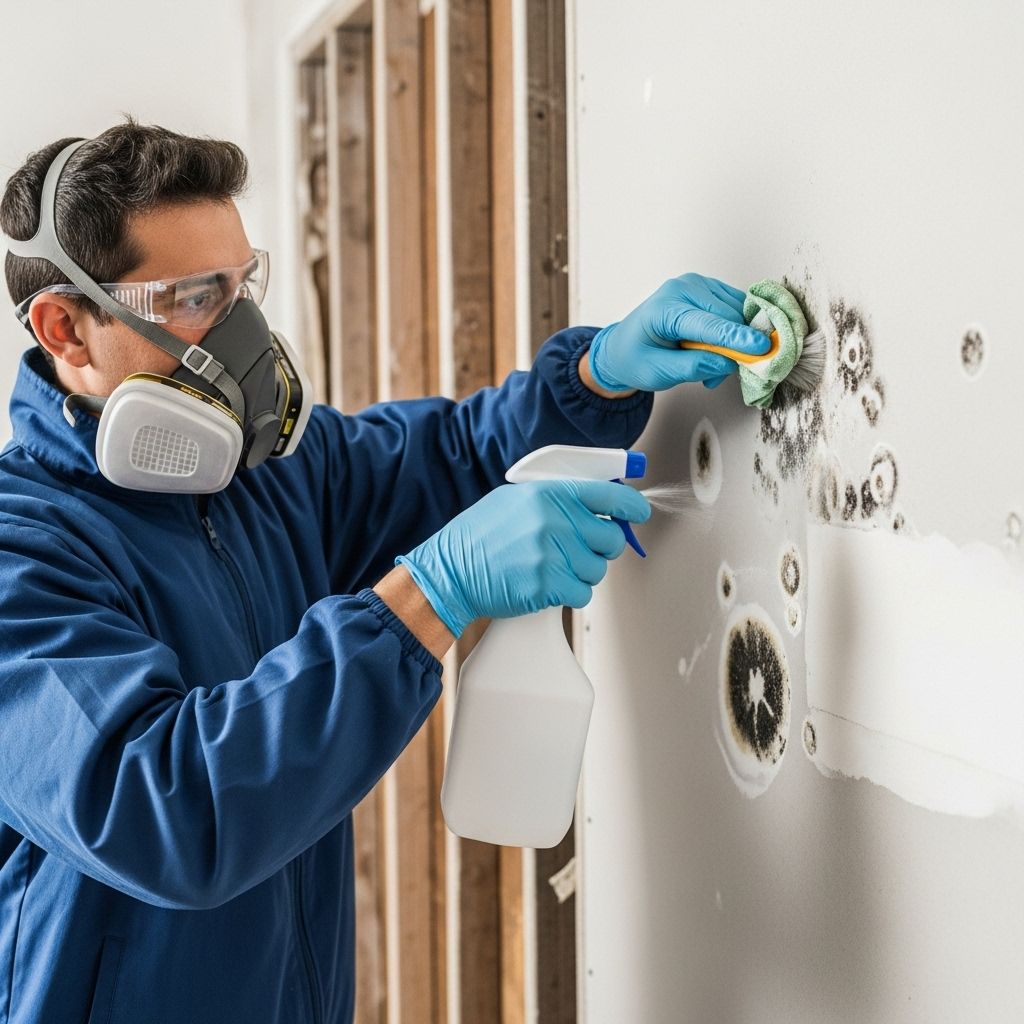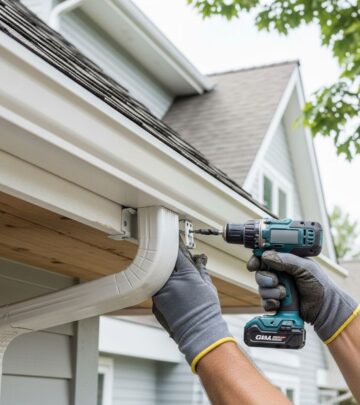Remove Mold From Drywall Safely: Expert Step-By-Step Guide
Eliminate damp hazards in your home with effective techniques for healthier walls today.

Image: HearthJunction Design Team
How to Remove Mold from Drywall: Step-by-Step Guide
Mold is a persistent and potentially hazardous problem for many homeowners, especially where moisture and humidity make drywall susceptible to fungal growth. Addressing mold as soon as it appears not only preserves your walls’ integrity but also protects your family’s health. This comprehensive guide covers how to spot, safely remove, and prevent mold on drywall using expert-recommended strategies.
Table of Contents
- Understanding Mold on Drywall
- How to Identify Mold
- Safety Precautions Before Removal
- Surface Cleaning Methods
- Deep Cleaning and Drywall Removal
- Preventing Future Mold Growth
- When to Call the Professionals
- Frequently Asked Questions
- Conclusion
Understanding Mold on Drywall
Mold is a type of fungus that thrives in damp, humid environments. Drywall, being porous and often found in places with high moisture (like bathrooms, kitchens, or basements), is particularly susceptible to mold infestations. Mold not only damages the appearance and structure of drywall but can also contribute to respiratory issues and allergic reactions in sensitive individuals.
- Common Causes: Leaky roofs, burst pipes, flooding, poor ventilation, or persistent condensation all create the perfect environment for mold growth.
- Health Risks: Mold spores can worsen asthma, cause allergic responses, and even lead to more severe respiratory problems if left unchecked.
How to Identify Mold
Recognizing the telltale signs of mold early is essential to prevent widespread damage. Mold on drywall often appears as:
- Discolored patches (commonly black, green, or grayish spots)
- A musty or earthy odor
- Bubbling, warping, or peeling of paint or wallpaper
- Visible fuzzy or slimy growth
Sometimes, the signs may be hidden behind baseboards, wallpaper, or in unexposed wall cavities. If you detect persistent moisture or odors, consider investigating further.
Safety Precautions Before Removal
Before tackling mold on drywall, it’s important to protect yourself and minimize the spread of spores:
- Wear personal protective equipment: gloves, goggles, and an N95 respirator mask
- Isolate the affected area using plastic sheeting to prevent cross-contamination
- Open windows or use fans (if safe) to ventilate the area
- Remove or protect nearby furniture and belongings
- Keep children and pets away from the work zone
Surface Cleaning Methods
For minor mold growth affecting the surface of drywall, you can often remove it with simple cleaning solutions and gentle scrubbing. Follow these steps:
- HEPA Vacuuming: Use a vacuum with a HEPA filter to remove loose spores and debris from the wall surface and surrounding area.
- Prepare a Cleaning Solution:
- Mix a homemade solution in a 2:1:1 ratio of baking soda, white vinegar, and water.
- Alternatively, use 3% hydrogen peroxide for its antifungal properties.
- Apply the Solution: Spray or dab the cleaning solution generously onto the moldy area. Allow it to sit for about 10 minutes to break down the mold.
- Gently Scrub: Use a soft-bristled brush to gently scrub the area. Avoid scrubbing too hard, which could damage the drywall.
- Wipe and Dry: Wipe the cleaned surface with a damp cloth to remove residue. Ensure the wall dries completely—use fans if needed.
Note: If mold stains remain after cleaning, commercial products or OxiClean can help brighten the surface, though they do not kill mold spores.
Deep Cleaning and Drywall Removal
If the mold has penetrated beneath the surface, or if you notice the drywall is soft, crumbly, or severely stained, simple cleaning will not be enough. Instead, follow these steps:
- Assess the Damage: Identify the extent of mold penetration. If more than 10 square feet is affected, it’s best to consult a professional.
- Cut Out Damaged Drywall:
- Using a utility knife, carefully cut out and remove all affected sections of drywall.
- Bag and seal removed materials in heavy-duty plastic for disposal.
- Clean the Framing: Treat any exposed studs, insulation, or sub-surfaces with a fungicidal cleaning solution. Scrub with a stiff brush if necessary.
- Dry the Area: Use fans and dehumidifiers to ensure the entire area is completely dry before making repairs.
- Apply a Mold-Resistant Primer: Paint the area with a mold-inhibiting primer to reduce future risk.
- Replace Drywall: Patch or install new drywall panels, then finish with mold-resistant joint compound and paint.
Recommended Tools and Materials
- HEPA vacuum
- Utility knife
- Protective gloves, goggles, and mask
- Plastic sheeting and sealing tape
- Baking soda, vinegar, hydrogen peroxide
- Soft- and stiff-bristled brushes
- Mold-resistant primer and paint
- Fans and dehumidifiers
- New drywall panels and joint compound
Preventing Future Mold Growth
Once you’ve removed the mold, take steps to ensure it doesn’t return. Mold prevention is centered on moisture control and environment management:
- Fix leaks in plumbing, roofs, or windows immediately
- Improve ventilation in commonly damp areas (use exhaust fans in bathrooms and kitchens)
- Ensure gutters and downspouts direct water away from your home’s foundation
- Use dehumidifiers in basements and other prone spaces
- Maintain indoor humidity below 60%, ideally between 30–50%
- Install vapor barriers in crawlspaces or basements if appropriate
- Choose mold-resistant drywall and building materials in renovation projects
When to Call the Professionals
Some mold problems are too extensive or hazardous for DIY solutions. Enlist professional help in the following situations:
- The affected area is larger than 10 square feet (about the size of a standard sheet of drywall)
- Mold growth is persistent after repeated cleaning efforts
- There is evidence of mold inside HVAC ducts or hard-to-reach cavities
- The home’s occupants have ongoing health symptoms related to mold
- You’re unsure about the extent or type of mold present
Professional mold remediation teams use advanced tools like HEPA air scrubbers, negative air machines, and dry-ice blasters to remove deeply embedded mold safely and thoroughly. They can also address underlying causes like structural leaks or chronic moisture problems.
Frequently Asked Questions
What should I do if I find mold behind drywall?
If you discover mold behind drywall, carefully remove the affected drywall, bag it for disposal, and treat any exposed wood or insulation with a fungicidal cleaner. Ensure the area is completely dry before making repairs.
Can I paint over moldy drywall?
You should never paint over mold. Painting may hide mold temporarily, but it doesn’t kill the spores and can allow the problem to worsen over time. Always remove and clean mold thoroughly before refinishing.
Is bleach a good mold remover for drywall?
Bleach is not recommended for drywall because it does not penetrate porous surfaces to kill the mold roots. Instead, use vinegar, hydrogen peroxide, or specialized mold removers designed for porous materials.
How can I tell if the mold is gone?
All visible signs of mold (spots, stains, odor) should be eliminated after thorough cleaning or removal. If musty smells persist, further cleaning or removal may be necessary. For severe cases, professional testing can confirm that spores are no longer present.
Is black mold more dangerous than other types?
While some types of black mold produce toxins, all molds can cause health issues and should be removed with the same diligence. Always use proper safety measures regardless of the mold type.
Conclusion
Removing mold from drywall is a critical task for maintaining a safe and comfortable home. By identifying the problem early, following correct cleaning and removal procedures, and taking steps to address excess moisture, you can effectively rid your living space of mold and keep it from returning. For severe or stubborn mold problems, don’t hesitate to call in the professionals who have the tools and expertise to ensure your home stays mold-free for the long term.
- Spot and address mold problems as soon as possible
- Always protect yourself and your home during mold remediation
- Fix the source of moisture to prevent future outbreaks
- Don’t hesitate to seek professional help for large or persistent issues
With the right knowledge and a proactive approach, you can keep your home’s walls clean, healthy, and mold-free for years to come.
References
Read full bio of Anjali Sayee










